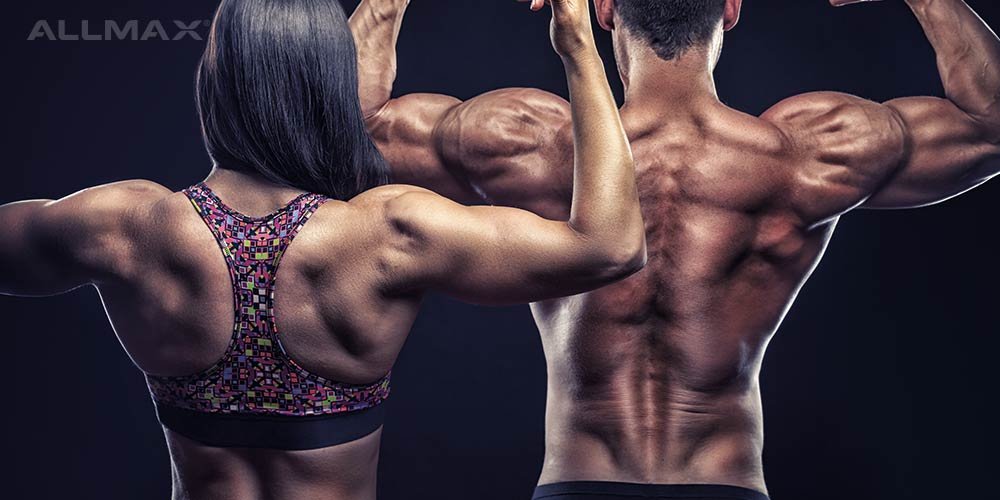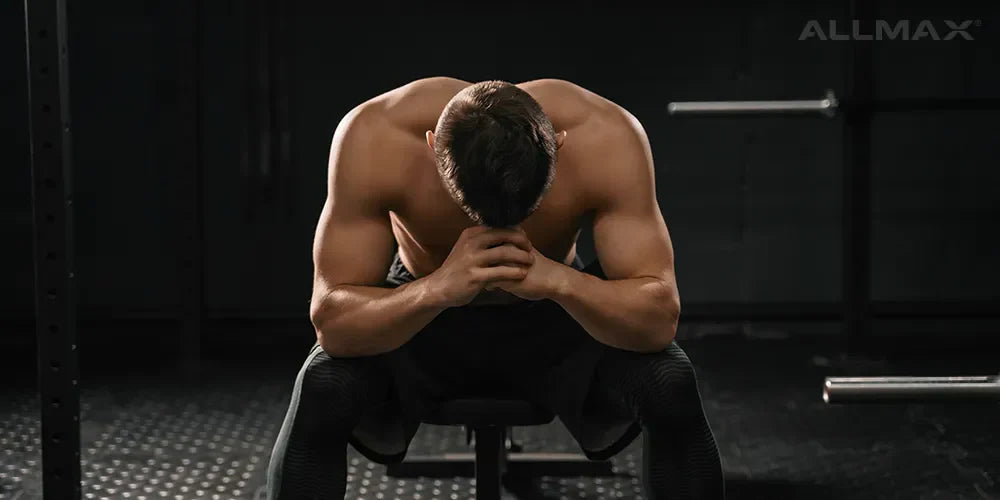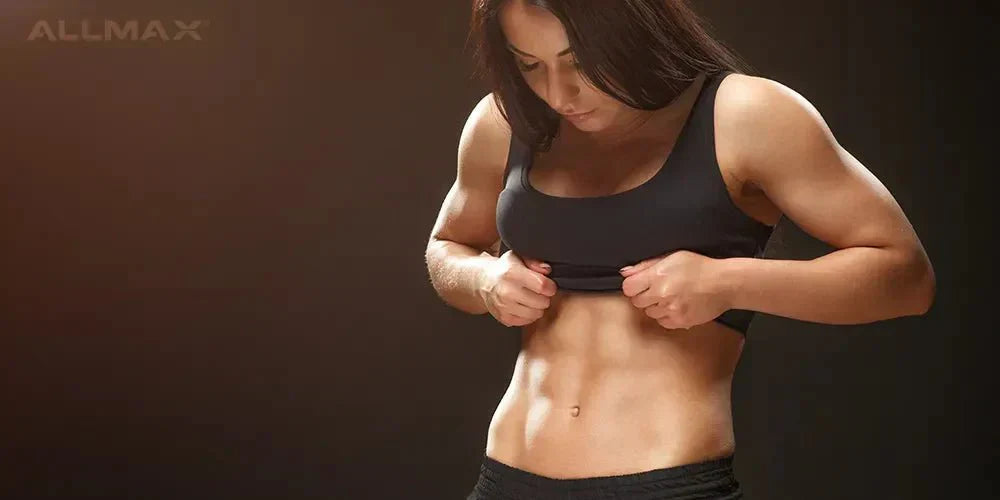Whether it concerns two arms and legs, unilateral exercises will balance muscle strength between both sides of the body, symmetric strength or symmetry, biologically speaking, is nature’s preferred state. Compromising such an ideal state of balance can – in terms of human performance and physical development – lead to higher injury risk , poor performance and weakness.
What is symmetry in bodybuilding?
Muscle and body symmetry is determined by how each side of our body is shaped by comparison to its opposite. Muscular proportion signifies the shape of our individual muscle groups and how these groupings fit together to enhance physical balance and muscle function.
Together this results in great balance between opposing muscle groups – the third crucial component for ensuring Dexter Jackson-like body-aesthetics (though for most of us on a much smaller scale). This is achieved through the combination of aesthetically desirable levels of proportion and building muscle symmetry.
"IN BODYBUILDING TERMS, GOOD MUSCLE SYMMETRY REPRESENTS A PERFECT BALANCE OF MUSCLE MASS BETWEEN BOTH SIDES OF THE BODY, WHILE PROPORTION DENOTES HOW WELL DEVELOPED EACH OF OUR MUSCLE GROUPS ARE, FRONT TO BACK AND SIDE TO SIDE."
For example, puny calves contrasted with massive thighs do not indicate poor symmetry, provided each calf muscle measures the same. However, such a discrepancy does indicate poor proportions. Ideally, the aspiring bodybuilder would build their calves to match the impressiveness of their quadriceps.
The same rule applies to all other muscle groups: to be at your best aesthetically and functionally, good symmetry and proportion is a must. So exactly how do you get muscle symmetry? This article will detail how best to determine whether your physique is symmetrical and proportional while offering ways to address any discrepancies you may have.
What Causes Muscle Asymmetry?
Muscle asymmetry in bodybuilding often develops when one side of the body becomes more dominant due to poor training habits or past injuries. This can happen from consistently using improper form, relying too much on the stronger side during compound lifts like bench press or squats, or skipping unilateral exercises that target each limb independently. Even small imbalances in technique, posture, or mobility can accumulate over time, leading to noticeable differences in muscle size, shape, and strength.
Other contributing factors include uneven recovery, limited range of motion, or a weak mind-muscle connection on one side. In bodybuilding, where aesthetics and symmetry are critical, these imbalances not only affect appearance but can also limit progress and increase the risk of injury.
Addressing muscle asymmetry requires focused adjustments in training, including more unilateral work, controlled tempo, and technique refinement to restore muscular balance and improve overall physique.
Why Emphasize Symmetry and Proportion?
Most of us are born with near-perfect symmetry but genetically speaking some of us may have to play catch-up in the proportion area. Still, we’re not amorphous lumps of muscle and bone; we are blessed with a finely-tuned physiology that allows us to navigate many tasks of varying levels of complexity.
A symmetrical body is the optimal balance between our left and right sides and while desirable proportions are difficult to achieve – over time certain injuries and general physical degradation, along with genetic limitations, culminate in a variety of muscular imbalances.
We now know what muscle symmetry is but what exactly are desirable proportions? Because we do not have biceps like Arnold in his prime (who, incidentally, did not possess great muscle symmetry between his left and right upper arms) or thighs like Ronnie Coleman, does this make us disproportionate from a bodybuilding perspective? Not at all.
"A STRICT CRITERIA FOR IDEAL PHYSICAL SHAPE CANNOT BE APPLIED BECAUSE NONE EXIST – BODYBUILDING IS, AFTER ALL, LARGELY A SUBJECTIVE SPORT."
That being said, there are certain recommendations we would be wise to follow to reduce muscle asymmetry. As long as our physique flows well from one muscle group to the next, and a respectable degree of muscular strength and size is evident we could be said to display proportion and muscle symmetry .
However, there are those who have clear genetic advantages: bodybuilder of yesteryear Steve Reeves possessed classical physical development replete with 18.5 inch neck, calves and upper arm development. His physique is thought by many to be the most symmetrical and proportional of all time. Though Mr. Reeves spent many years in the training trenches building his phenomenal physique, genetics also played a role. Small joints combined with large muscle bellies, for example, conveyed, for him, an illusion of greater size. The same degree of size on someone with a larger bone structure (including a wide pelvic girdle) may appear “blocky” and lacking desirable aesthetics.
How to fix a muscle imbalance on my chest?
For some people, size at the expense of shape appears to be of primary importance; for others, balanced mass is the number one concern. Great balance between muscle groups best represents the physical ideal, however, there will always be those who prefer sheer immensity over well-crafted muscle density.
Aside from girth similarity between the upper arm, calf, and neck, another indicator of great symmetry and proportion is the coveted X-frame, which includes the V-taper look encompassing a small waist, broad shoulders, and wide lat muscles, in conjunction with diamond-shaped calves and flaring thighs.
"TO PROPERLY DEVELOP A MUSCULAR PHYSIQUE AS A WHOLE, TO ENSURE OPTIMAL SYMMETRY AND PROPORTION, WE MUST USE ISOLATION EXERCISES WITH EQUAL INTENSITY; THOSE WE CAN SEE AND THOSE THAT ARE SEEMINGLY HIDDEN BENEATH OTHER MUSCLES."
For bodybuilding success our muscles must look impressive from all angles; deep inner back thickness and impressive spinal erectors must not be neglected in favor of the more showy lats. Likewise, the chest must not be bottom-heavy but display complete development of the side, inner, outer, upper, and lower areas. The tibialis anterior, serratus, soleus, and other often-overlooked areas are to be targeted as often as the larger and more noticeable shoulders, arms, and chest.
Ways to correct muscle imbalances
Building a symmetrical and proportionate physique may not only present you in the best possible light aesthetically, but it is also likely to ensure injury prevention and promote optimal physical performance. For example, poor abdominal, lower back and hamstring development may create an unnaturally excessive inward curvature of the lower (lumbar) spine or lordosis. Overworking the quads with squats while underutilizing direct posterior chain movements such as deadlifts and hamstring curls may promote this condition along with poor posture, and injury.
All of the muscles of our body are designed to work in concert, in perfect harmony. Multiple muscle groups are enlisted each time we complete a functional task such as lifting a box or pushing a trolley, and whenever there is an imbalance between muscle groups, one area is forced to shoulder the load, and excessive pressure is placed on the supporting joint. Injury and further weakness invariably result. Thus, it is crucially important to train all muscle groups to promote proper symmetry and proportion.
How to Develop Muscular Symmetry and Proportion
Identifying a person who has poor symmetry and proportion is not a difficult task. Bottom-heavy chest (suggestive of a program heavy on benches and light on incline work), stalk-like legs (indicative of an aversion to squats and heavy calf raises), and a narrow back (due to poor chinning technique and insufficient back training volume) all conspire to negate one’s physical balance. In fact, many of today’s ‘hardcore’ trainers place such a heavy focus on arm training and pressing movements, to the detriment of complete muscular development, that they resemble football players more than they do bodybuilders.
"TO BE A TRUE BODYBUILDER REQUIRES BALANCE ABOVE ALL ELSE – INDEED, A LIGHTER COMPETITOR WITH GREAT AESTHETICS WILL ALWAYS BEAT OUT A HEAVIER ATHLETE WITH POOR MUSCULAR SYMMETRY AND PROPORTION."
Below are three tips that will help you to balance out your physique.
Tips to Balance Your Physique
Perfect Your Form
You may have the perfect program designed expressly for developing great muscular balance, but if your training form is off, the movements used will not provide enough muscle stimulation and your physique may display few improvements. Excellent form cannot be overemphasized.
Try to:
completely eliminate all momentum when lifting (if this cannot be done, then lighten your load);
keep tension on the working muscles at all times (do not rest at the bottom or top of the movement);
focus on the downward phase of all lifts (the negative rep is equally as important as the positive so do not drop the resistance – control it);
always work your muscles from angles that create the most forceful contraction (this may require experimentation to determine which angle of resistance works best for you).
Isolation exercises
Though compound movements are important mass builders and should never be neglected, we should not utilize only these movements. For example, there are those who do only squats and leg presses for their legs, rationalizing that hamstrings, glutes, and finer quad development can thus be adequately targeted with them. Other areas suffer a similar fate: back is worked exclusively with rows, shoulders with overhead presses, and chest with benches.
To work all muscle groups from a variety of angles we must include enough isolation work: bent over lateral raises, incline dumbbell flyes, leg extensions, hamstring curls, lunges, tibialis raises, seated calf raises, dumbbell pullovers and other such isolation movements will help us to “fill in the gaps” as we work to balance our physiques.
Maintaining Symmetry: Must-Know Tips
An exaggerated X-frame, as mentioned earlier, is the bodybuilding ideal and developing one will lend a degree of balance that would not otherwise be achieved without the inclusion of certain key exercises. Becoming an X-man (or woman) means building wide shoulders (through lateral raises and wide grip upright rows), manta ray-like lat muscles (through chins up, lat pulldowns, and dumbbell pullovers), fully developed thighs and calves (through a wide array of leg exercises) and topping it all off with a tiny waist courtesy of proper nutrition and abdominal crunches for high reps. Though all muscles must be trained and brought into perfect balance, an excellent X-frame serves as the perfect framework for symmetrical, proportional mass.
12-week Unilateral Exercises Program
The following program is a 'three-on/one-off, two-on/one-off' protocol incorporating a wide selection of movements specifically chosen to ensure optimal muscular symmetry and proportion. Each body part is trained, hard, once per week, rep ranges are to be kept consistent for the full 12-weeks, and training weight increases are to be made wherever possible. Cardio is encouraged 4 days per week: 30 minutes of HIIT (High-Intensity Interval Training) each session. Check out our selection of pre-workout products to kick-start your workout.
GOOGLE IS YOUR FRIEND! IF YOU SEE AN EXERCISE THAT YOU DON’T KNOW, COPY THE NAME AND ENTER IT AS A GOOGLE SEARCH. ALSO, EXRX.COM IS A GREAT RESOURCE WITH EVERY CONCEIVABLE LIFT KNOWN TO MAN!
ss/w = Superset with
Monday – Quads & Hamstrings
Narrow stance squats: 3 sets of 10-15
Wide stance squats: 3 sets of 10-15
Leg extensions ss/w walking barbell lunges: 3 sets of 8-12
Hack squats: 2 sets of 15-20
Lying leg curls: 3 sets of 8-12
Standing leg curls ss/w stiff-legged deadlifts: 3 sets of 8-12
Note: hamstrings are also worked with all direct quad movements.
Tuesday – Shoulders & Triceps
Standing lateral delt raises with dumbbells: 3 sets of 8-12
Bent over lateral raises ss/w reverse pec deck: 3 sets of 8-12
Seated dumbbell shoulder presses: 3 sets of 10-15
Wide grip upright cable rows: 3 sets of 8-12
Standing dumbbell external rotations: 3 sets of 15-20
Reverse grip cable pressdowns (with straight bar): 3 sets of 10-15
Dumbbell extensions s/w rope pressdowns: 4 sets of 8-12
Note: alternate shoulders and triceps training from week to week.
Wednesday – Back & Biceps
Medium-width chin-ups: 4 sets of 8-12 (attach weight if needed)
Reverse grip lat pulldowns ss/w close grip overhand lat pulldowns: 3 sets of 8-12
Bent over barbell rows: 2 sets of 10-15
One-arm dumbbell rows: 3 sets of 8-12
Lying dumbbell pullovers: 2 sets of 8-12
Hammer curls ss/w dumbbell preacher curls: 3 sets of 8-12
Incline dumbbell curls: 4 sets of 8-12
Note: alternate biceps and back training from week to week.
Thursday – Rest day
"Check out our selection of recovery products to help you stay anabolic on rest days."
Friday – Chest
Incline dumbbell presses ss/w incline dumbbell flies: 3 sets of 8-12
Wide grip bench presses: 3 sets of 8-12
Decline dumbbell presses: 3 sets of 8-12
Cable crossovers: 2 sets of 10-15
Saturday – Calves & Abs
Standing calf raise: 4 sets of 15-20
Seated calf raise ss/w toe press on leg press machine: 3 sets of 15-20
Donkey calf raise (partner assisted): 3 sets of 15-20
Tibialis raises: 4 sets of 15-20
Swiss ball crunches: 4 sets of 20-25
Hanging leg raises ss/w rope crunches: 4 sets of 10-15
Note: alternate calf and abs training from week to week.
Sunday – Rest day
Proper Nutrition for Muscle Symmetry
Achieving balanced muscle development isn't just about training — nutrition plays an equally vital role. To support muscle symmetry, your diet must provide adequate protein, complex carbohydrates, healthy fats, and essential micronutrients that fuel recovery and growth on both sides of the body.
High-quality protein is key for muscle repair and hypertrophy. Aim for a consistent intake of complete protein sources throughout the day, especially around your workouts. Complex carbs like oats, rice, and sweet potatoes help replenish glycogen and maintain training intensity, while healthy fats from sources like olive oil or nuts support hormone balance.
To optimize your nutrition, consider integrating targeted supplements. We offer several high-performance products ideal for bodybuilders focusing on symmetry:
Isoflex – a premium whey protein isolate with high bioavailability, perfect for post-workout recovery and lean muscle growth.
Creatine Monohydrate – supports strength and muscular endurance, allowing balanced performance across both sides of the body.
Beta-Alanine – helps reduce muscle fatigue and improve training output, especially during unilateral exercises.
Vitaform – a complete multivitamin to ensure no micronutrient deficiencies are limiting your progress or recovery.
Combining a balanced diet with smart supplementation ensures your body has all the tools it needs to correct imbalances, build proportionate muscle, and achieve a more aesthetic, symmetrical physique.



